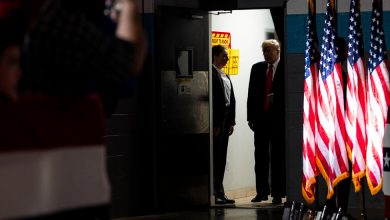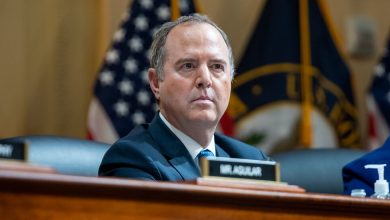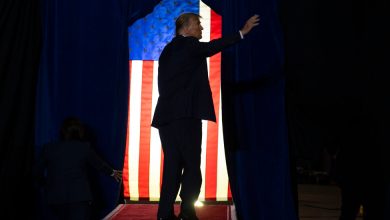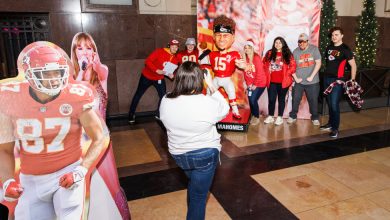A Key to Returning to Normal Is Paid Sick Leave, Democrats Say

The Omicron wave hammered the American work force, sending more people home sick than at any other point in the pandemic. Yet unlike in 2020, there is no federally required paid sick leave for workers — and none at all for the one-fifth of workers who don’t receive it from their employers.
Now, as Omicron recedes and many restrictions are being lifted, and as more of the country begins to treat Covid as an unavoidable part of life, some Democratic lawmakers and others are trying to revive paid leave for Covid-related reasons.
In January, 2.3 percent of the American work force was home sick, according to the Bureau of Labor Statistics — three times that of a typical prepandemic month.
The disruptions have continued: In the last week of January and first week of February, 12.8 million Americans did not work because they had Covid or were caring for someone who did, or because their child’s school or day care was closed, a census survey found. That accounted for 21 percent of all adults who were not working and not retired. Another three million people didn’t work because they were concerned about getting or spreading the virus.
Whether they got paid sick leave and whether their jobs were protected depended on where they lived and worked.
“As we enter the endemic phase of Covid, it’s a critical tool in returning to normal,” said Vicki Shabo, senior fellow for paid leave policy and strategy at New America, a left-leaning policy group.
The main idea Democrats are pursuing now is to include a new round of Covid paid sick leave in the spending bill to fund the government, the deadline for which has been extended to March 11. They are also considering a stand-alone paid sick leave bill, or the inclusion of paid leave in a Covid relief package for businesses.
“We are exploring every possible path to make progress on paid leave this Congress,” Senators Patty Murray and Kirsten Gillibrand said in a statement this month, and the White House supports those efforts.
Yet the United States remains one of 11 countries, and the only rich country, with no federal paid sick leave. During the pandemic, most wealthy nations in the Organization for Economic Cooperation and Development temporarily expanded their sick leave to cover people in quarantine and self-employed workers, and to relieve employers from paying for sick leave themselves.
March 2020, the start of the pandemic, was the first time the United States offered comprehensive paid leave. The program expired in December that year. It gave two weeks to workers who were sick or needed to care for someone who was, and 12 weeks to care for children whose schools were closed. Employers were fully reimbursed in the form of a payroll tax credit.
The leave excluded more than half of private-sector workers, including those at companies with more than 500 workers and at many small businesses. Even so, there was evidence that it slowed the spread of Covid. A study published in Health Affairs compared new Covid cases in states that already had paid sick leave with those that gained it because of the new law. After adjusting for factors like testingand lockdowns, they estimated that the new leave prevented 15,000 cases a daynationwide. Another study, by Kaiser Family Foundation, found that paid sick leave increased vaccination rates.
“High-quality data clearly shows infection decreases when workers have access to sick leave,” said Nicolas Ziebarth, an economist at Cornell who was one of the researchers on the first study. “It prevents contagious workers from coming to work.”
Democrats have long pushed for permanent paid leave for a range of reasons, including sickness, a new baby and family caregiving. Initially, President Biden’s large social spending bill had 12 weeks of leave. But that plan failed to get enough support in Congress, including from any Republicans.
For now, Democrats have scaled back their ambitions to focus on a temporary program providing emergency time off for Covid. They hope this smaller version is more likely to get Republican votes. The first round of Covid paid leave, in 2020, was passed under President Trump with bipartisan support.
The U.S. Chamber of Commerce does not support passing paid leave in the context of a crisis, an official there said, because Covid seems here to stay. The chamber opposes using a funding measure to get it done, versus debating it in Congress as a stand-alone policy. And it says now is not the moment for it because restrictions like mask mandates are being eased, including by Democratic governors.
In the absence of a federal policy, there is a patchwork of paid leave policies from 14 states and Washington, D.C.; from dozens of local governments; and from employers. Eight in ten workers have some form of it, an average of eight days a year. Yet just half of workers in the bottom quartile of earnings have it, and one-third of those in the bottom tenth. That compares with 95 percent of the highest earners. Those without it are disproportionately people who can’t work from home, like those in service and construction jobs, and who work part time, in nonunion jobs or at small businesses.
To cope with the pandemic, some states, including New York and New Jersey, added emergency paid leave for Covid. Oregon and others expanded their paid sick leave to include new needs, like getting vaccinated or caring for children whose schools were closed. This month, California passed a law mandating that employers of more than 25 people provide 10 days of paid leave for Covid, retroactive to Jan. 1.
The Coronavirus Pandemic: Key Things to Know
Queen Elizabeth tests positive. The 95-year-old British monarch has been infected with the coronavirus and is “experiencing mild coldlike symptoms,” Buckingham Palace said. The announcement comes as Prime Minister Boris Johnson is poised to lift England’s remaining Covid restrictions.
C.D.C. data. The Centers for Disease Control and Prevention has published only a tiny fraction of the Covid data it has collected, including critical data on boosters and hospitalizations, citing incomplete reports or fears of misinterpretation. Critics say the practice causes confusion.
The virus in the U.S. Cases continue to drop nationwide, including in New York, where the latest data offered some optimism after a challenging year. Gov. Gavin Newsom of California and other U.S. governors are shifting to policies that accept living with uncertainty over possible new variants.
The pandemic also pushed some companies that didn’t have paid leave to give it permanently. Darden Restaurants, which owns Olive Garden, began offering five days of paid sick leave and two weeks of paid family or medical leave. But that is an anomaly, said Daniel Schneider, a professor of public policy at Harvard and a director of the Shift Project, a large continuing survey of service workers.
“For the hourly workers at large firms who we have been surveying for years now, sick leave has always been a rare commodity,” he said. “It really has not moved, despite a global pandemic.”
More common, even as Omicron surged, was for some of the largest American employers to cut in half, to five days, the paid Covid leave they had been offering workers. They did so after the Centers for Disease Control and Prevention on Dec. 27 halved to five the recommended number of days that people with Covid should isolate. Employers that shortened paid Covid leave include Walmart, Amazon, Delta Air Lines, CVS and Walgreens.
In some cases, the companies offer additional leave options for people who remain sick after five days. Others, like Walgreens, CVS and Kroger, the large grocery chain, give no paid sick time to workers who are unvaccinated without an approved exemption (at Kroger, vaccinated employees still receive 10 days of paid sick leave for Covid).
Christina Hayes, 34, is an on-call Delta gate agent in Michigan. When she was recently called to work, she declined. She has lupus, an autoimmune disease, and was worried about her health if she were exposed to people who returned to work while Covid positive.
“It bothers me they would change that, because already at my job it’s high risk for exposure to Covid,” she said.
Because she’s not working, Ms. Hayes, a single mother, says she is living off her savings, and skipping payments on things like car insurance.
“Money is really tight right now, so I’m just trying to figure out employment that is not so high-risk,” she said. She has a new question in job interviews, one she said she never asked before the pandemic: “When a job calls me, I ask, ‘Do you guys have paid leave; what do you offer?’”





